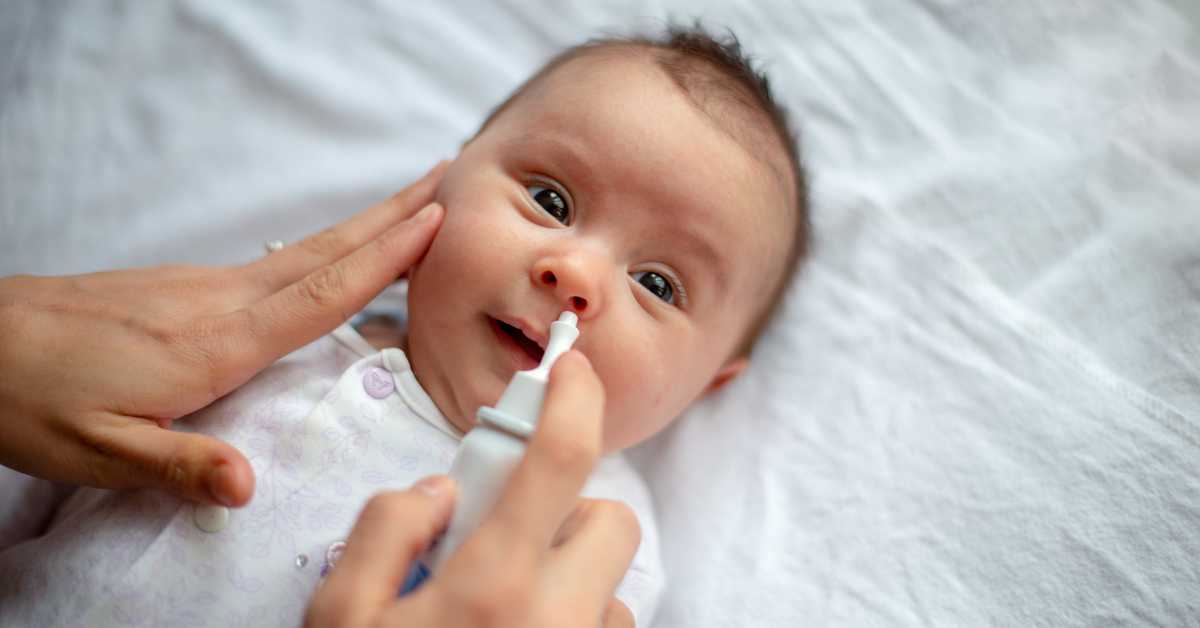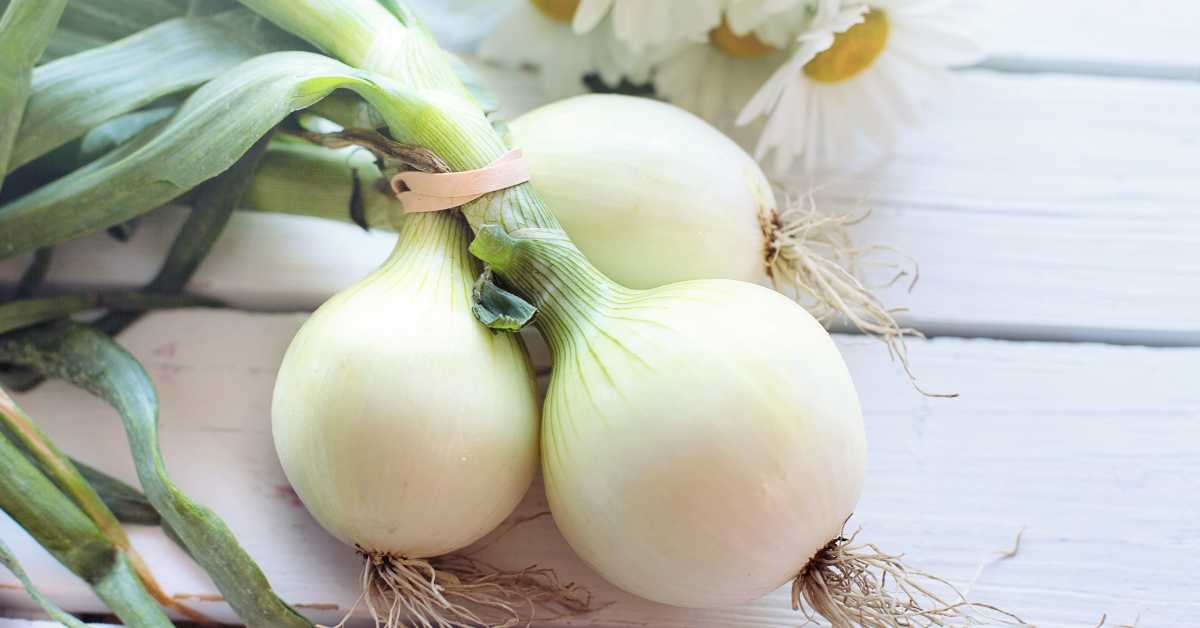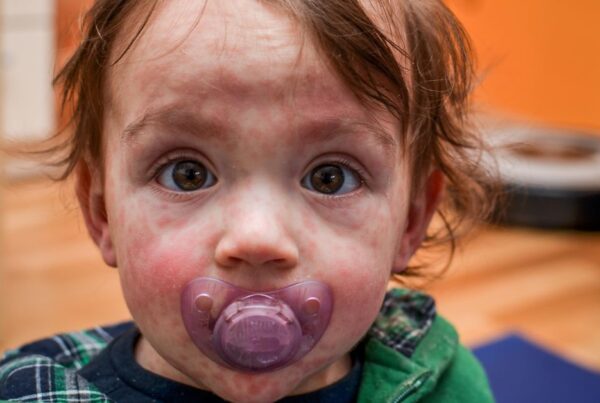Stuffy noses are a common problem that happen to people of all ages as a result of upper respiratory infections and/or airborne allergies. Saline sinus rinses are a staple of natural medicine for treating stuffy noses from any cause.
This article covers some of the scientific evidence behind saline sinus rinses, gives DIY and pre-made options, highlights important safety considerations, shares some video links and offers step-by-step instructions.
What Is A Saline Sinus Rinse?
Saline solution is simply a mixture of salt (sodium chloride) and water. Often baking soda (sodium bicarbonate) is added to saline sinus rinse solutions to help thin mucus (1).
You may hear the term sinus rinse also referred to as nasal rinse, nasal irrigation, nasal lavage, nasal spray, or neti pot. These all refer to the practice of washing out the nasal cavity with saline solution to help clear out mucus, allergens, pathogens, and potential irritants in the nasal cavity (1, 2).
Sinus rinses also help to moisturize and reduce inflammation of the nose’s mucus membranes while improving mucociliary clearance – the ability of tiny hairlike projections in the membranes of the nose to move debris out of the nose (1, 2).
Traditional Use Of Saline Sinus Rinses
Saline sinus rinses have been used in traditional systems of medicine around the world, though the best known and most likely the oldest use of saline sinus rinses is the Ayurvedic practice of Jala Neti, which uses a Neti Pot to administer saline solution to the nostrils (3, 4).
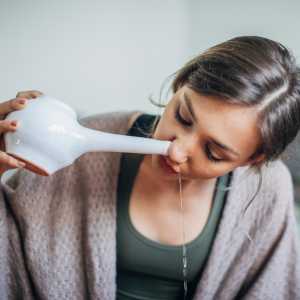
According to a 2020 review published in Ayurveda Integrative Medicine Journal that draws upon current scientific evidence and traditional Ayurvedic knowledge, Jala Neti benefits the sinuses, eyes, memory, concentration, and mood. Jala Neti is typically followed with a breathing exercise called Kapalabhati, which is used to dry and clear the nostrils and has additional benefits for the mind and body (16).
More Evidence For Saline Sinus Rinses
The efficacy of saline sinus rinses has attracted attention from the Western medical system as well. There has been research into its efficacy for acute and chronic rhinosinusitis (aka. short term and long term infection/inflammation of the nose and sinuses), infectious disease, and post-operative recovery (1, 5, 7, 8, 9, 10, 11, 12, 13, 14).
Though the evidence is tricky to interpret because of the wide variations in types of nasal irrigation and details of treatment, the overall scientific consensus is that it is helpful for symptoms of congestion resulting from allergies and upper respiratory infections (5, 7, 8, 9, 10, 11, 12, 13).
It is important to remember that every person is different. In my medical practice, I find that sinus rinses are very helpful for most people, including me and my family, but don’t do much for others. Getting to know what works best for you and your family is essential.
How To Make DIY Sinus Rinse Saline Solution
To make your own DIY Sinus Rinse Saline Solution, add ½ tsp of high quality salt plus ½ tsp of baking soda to 1 cup of warm, sterile water. This solution can be stored at room temperature for up to three days and used in the sinus rinse device of your choice.
In my practice, I occasionally have parents add in other healing agents like probiotic powder/drops to replenish the nasal microbiome or goldenseal to strengthen the mucus membranes of the nose. However, I most often prescribe sinus rinses with the simple saline solution described above. If adding additional healing agents, be sure to consult a physician first because these aren’t appropriate for everyone and there may be extra safety considerations to take into account.
Sinus Rinse Devices
There are many different sinus rinse devices on the market; ultimately, the best one for you and your family is the one that you find easiest to use. The following is a short list of some of the most easily available sinus rinse devices and I’ve included some videos showing how to use them.
Nasal Syringes
Personally, I like simple, inexpensive nasal syringes because they make it easy to control the flow, volume, and angle of saline administration.
I found this video of a mom, Rachel Sparrow, using a nasal syringe to clear her baby’s airway. Rachel has the added tip of trying the saline on your own nose before administering it to your baby to make sure that the salt concentration isn’t too weak or too strong, and I think that is a great idea.
Neti Pots
Other options include neti pots which are the traditional nasal rinse instrument used in Ayurvedic medicine. They are typically ceramic and look like little teapots, though plastic neti pots are available now as well. Ceramic neti pots have the benefit of being non-porous, easy to clean, and long lasting. However, they do take a little getting used to and can be messy at first.
If you are interested in learning more about this method, I found a great video of yogi, Arundhati Batimangalkar, demonstrating how to use a neti pot to do jala neti followed by Kapalabhati breathing.
Squeeze Bottles
Squeeze bottles are another common option, and there are specially designed sinus rinse squeeze bottles available on the market. They have the benefit of being easy to use and minimally messy. However, because they are made of plastic, they are more difficult to get completely clean. NeilMed, one of the biggest makers of sinus rinse equipment, recommends replacing your squeeze bottle every three months.
This video from NeilMed shows how to use a sinus rinse squeeze bottle.
Nasal drops
Pre-made nasal drops are an alternative to sinus rinses that I especially like for babies. Rather than rinsing the sinuses, with nasal drops you simply apply 1-2 drops inside each nostril and follow with nasal suction using a Nose Frida, nasal bulb, or something similar. The saline solution helps to break up mucus and moisturize the inside of the nose. I like these because they are gentler for babies, and tend to be sold in single use packages, which reduces the risk of bacterial contamination. If you’re using DIY saline instead of pre-packaged saline, nasal syringes can be used to administer 1-2 drops of saline in each nostril.
This video from NeilMed shows how to use nasal drops for babies. Note: the baby is on her back. This is appropriate for nasal drops, as shown in the video, but not more comprehensive sinus rinses.
Nasal Spray
Like nasal drops, nasal spray doesn’t rinse the sinuses in the same manner as neti pots, nasal syringes, or squeeze bottles. However, it does a great job of breaking up mucus and moisturizing the inside of the nose. These are great for kids who can’t tolerate a sinus rinse.
This video from NeilMed shows how to use sinus spray for kids.
How To Do A Sinus Rinse For Kids
Before getting started with a sinus rinse for little ones, make sure that you explain what will happen. Let them know it might feel “weird,” but it will be over quickly and will help them breathe more easily once it is finished. The saline solution might burn a little and the sensation of having water go into your nostril certainly takes some getting used to!
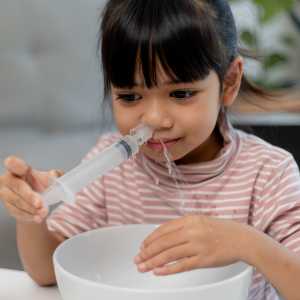
To get started, wash your hands thoroughly with soap and water. Warm the saline solution in a similar way to how you would warm breast milk or formula. You want it comfortably warm but not hot.
Have your child lean their head forward over the sink or bathtub depending on how tall they are. Then have them tilt their head to the side and keep their mouth slightly open.
Insert the nozzle of the sinus rinse device into the nostril closest to the ceiling and gently administer saline solution at a rate and volume that is tolerable to your child. Aim towards the back of the head, not the top of the head. Older kids may be able to do this by themselves.
The solution should ideally flow in one nostril and out the other; however, if the nasal passages are very inflamed, it might flow out through the mouth or back out through the same nostril it was administered into. This is okay, and it is also alright if a small amount of the saline solution is swallowed.
Have your little one gently blow their nose after the sinus rinse is finished.
Repeat the sinus rinse on the other nostril, then thoroughly clean the device that you used.
Sinus rinses can be done 1-2 times per day if symptoms are present. If there aren’t any symptoms of congestion, I don’t usually have people use sinus rinses preventatively. However, weekly or biweekly sinus rinses may be part of a long term healing plan for people who are healing from chronic nasal or sinus problems. Overuse of sinus rinses can cause irritation of the nasal mucosa.
Sinus Rinses For Babies
When it comes to babies, I often prefer to use saline nasal drops rather than a full sinus rinse. However, sometimes a sinus rinse may be recommended by your healthcare practitioner, for example in cases of cystic fibrosis or bronchiolitis.
Babies can be held in an upright position leaning slightly forward (17) or they can be laid on their side while the saline is administered to the upper nostril (18). Do not administer to a baby while lying flat on their back because they could choke on the solution.
Sinus rinses should not be performed on babies under 6 months of age because they won’t have developed the necessary coughing reflexes needed to keep them safe (17).
Safety Concerns For Saline Sinus Rinses
Saline rinses carry a very rare but serious risk of microbial contamination, and there have been some case reports of infection and even death that have resulted from contaminated sinus rinses (4, 6).
To avoid these potential complications, make sure that your sinus rinse device is always properly cleaned and that you use sterile water if you’re making your own sinus rinse solution. Options are distilled water (my preferred method) or water that you’ve boiled for 3 minutes and allowed to cool.
Pre-Made Sinus Rinse Options
There are many premade sinus rinses available on the market. I personally like the brand NeilMed. They have premixed options, pre-measured packets to mix into water, spray bottles, nasal bottles, and porcelain pots available. (No affiliation; I simply like their products).
Summary
Saline sinus rinses are often used to treat stuffy noses, sinus issues, and nasal congestion. This simple home remedy is very safe and effective so long as proper cleanliness measures are taken.
References:
- Bastier, P. L., Lechot, A., Bordenave, L., Durand, M., & De Gabory, L. (2015). Nasal irrigation: from empiricism to evidence-based medicine. A review. European annals of otorhinolaryngology, head and neck diseases, 132(5), 281-285.
- Succar, E. F., Turner, J. H., & Chandra, R. K. (2019). Nasal saline irrigation: a clinical update. International forum of allergy & rhinology, 9(S1), S4–S8. https://doi.org/10.1002/alr.22330
- Fandino, A., & Douglas, R. (2021). A historical review of the evolution of nasal lavage systems. The Journal of laryngology and otology, 135(2), 110–116. https://doi.org/10.1017/S002221512100030X
- Ho, E. Y., Cady, K. A., & Robles, J. S. (2016). A Case Study of the Neti Pot’s Rise, Americanization, and Rupture as Integrative Medicine in U.S. Media Discourse. Health communication, 31(10), 1181–1192. https://doi.org/10.1080/10410236.2015.1047145
- Gallant, J. N., Basem, J. I., Turner, J. H., Shannon, C. N., & Virgin, F. W. (2018). Nasal saline irrigation in pediatric rhinosinusitis: A systematic review. International journal of pediatric otorhinolaryngology, 108, 155–162. https://doi.org/10.1016/j.ijporl.2018.03.001
- Winegarner, J. H., & Wittkopp, J. (2020). Streptococcus pneumoniae Meningitis Associated With Over-the-Counter Sinus Irrigation. Cureus, 12(5), e8258. https://doi.org/10.7759/cureus.8258
- Cabaillot, A., Vorilhon, P., Roca, M., Boussageon, R., Eschalier, B., & Pereirad, B. (2020). Saline nasal irrigation for acute upper respiratory tract infections in infants and children: A systematic review and meta-analysis. Paediatric respiratory reviews, 36, 151–158. https://doi.org/10.1016/j.prrv.2019.11.003
- Head, K., Snidvongs, K., Glew, S., Scadding, G., Schilder, A. G., Philpott, C., & Hopkins, C. (2018). Saline irrigation for allergic rhinitis. The Cochrane database of systematic reviews, 6(6), CD012597. https://doi.org/10.1002/14651858.CD012597.pub2
- Baxter, A. L., Schwartz, K. R., Johnson, R. W., Kuchinski, A. M., Swartout, K. M., Srinivasa Rao, A. S. R., Gibson, R. W., Cherian, E., Giller, T., Boomer, H., Lyon, M., & Schwartz, R. (2022). Rapid initiation of nasal saline irrigation to reduce severity in high-risk COVID+ outpatients. Ear, nose, & throat journal, 1455613221123737. Advance online publication. https://doi.org/10.1177/01455613221123737
- Jung, M., Lee, J. Y., Ryu, G., Lee, K. E., Hong, S. D., Choi, J., Kim, S., Ahn, K., Dhong, H. J., Chung, S. K., Kim, J., & Kim, H. Y. (2020). Beneficial effect of nasal saline irrigation in children with allergic rhinitis and asthma: A randomized clinical trial. Asian Pacific journal of allergy and immunology, 38(4), 251–257. https://doi.org/10.12932/AP-070918-0403
- Schreiber, S., Ronfani, L., Ghirardo, S., Minen, F., Taddio, A., Jaber, M., Rizzello, E., & Barbi, E. (2016). Nasal irrigation with saline solution significantly improves oxygen saturation in infants with bronchiolitis. Acta paediatrica (Oslo, Norway : 1992), 105(3), 292–296. https://doi.org/10.1111/apa.13282
- Sansila, K., Eiamprapai, P., & Sawangjit, R. (2020). Effects of self-prepared hypertonic nasal saline irrigation in allergic rhinitis: A randomized controlled trial. Asian Pacific journal of allergy and immunology, 38(3), 200–207. https://doi.org/10.12932/AP-090618-0331
- Martínez-Serrano, A., Martínez-Campos, P., Seijoso-González, L., & Ruiz-Rojo, H. (2021). Literature review of nasal lavage technique in paediatrics. Revisión narrativa de la técnica de los lavados nasales en pediatría. Enfermeria clinica (English Edition), 31(3), 189–194. https://doi.org/10.1016/j.enfcli.2021.01.005
- Vakil, A. J., Ojha, T., Prasad, S., & Singh, P. (2022). Comparison of Hypertonic Saline with Normal Saline in Nasal Irrigation Post Endoscopic Sinus Surgery. Indian journal of otolaryngology and head and neck surgery : official publication of the Association of Otolaryngologists of India, 74(Suppl 2), 1518–1522. https://doi.org/10.1007/s12070-021-02620-x
- Endam, L. M., Alromaih, S., Gonzalez, E., Madrenas, J., Cousineau, B., Renteria, A. E., & Desrosiers, M. (2020). Intranasal Application of Lactococcus lactis W136 Is Safe in Chronic Rhinosinusitis Patients With Previous Sinus Surgery. Frontiers in cellular and infection microbiology, 10, 440. https://doi.org/10.3389/fcimb.2020.00440
